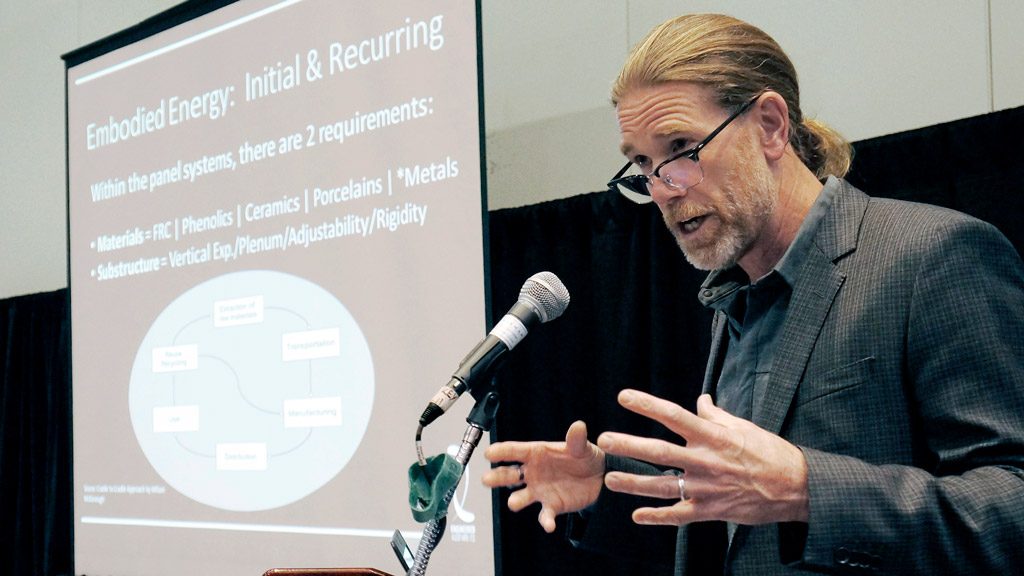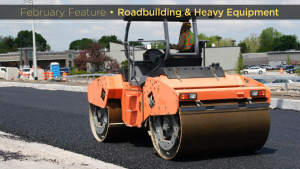Several years ago a sophisticated device that “very accurately” measures glacial movement took images from a satellite to measure movement in a building in El Paso, Texas, during a heat wave.
The results were surprising.
“The building grew multiple centimetres,” said Jeff Kerr, senior technical adviser of Toronto-based Engineered Assemblies. “I thought it was fascinating that a building would move that much.”
Kerr, who gave a seminar on the effects of climate change on buildings at the CSC (Construction Specifications Canada) Building Expo recently in Toronto, said much of the movement or “swelling” was in the facade system.
“The question is: Are we designing and building our (cladding) systems to handle that much expansion and contraction? There are a lot of places in Canada that can see massive swings in temperature that can cause substantial movement,” said Kerr.
“We’ve got panels now that expand and contract a lot more because we are building them lighter weight, lower mass and we have substructures lighter weight that are moving a little bit more,” he said.
The design and engineering community is aware of the issues with new cladding systems but has the community connected the dots?
“Everybody across this country has complained about more failures recently and the majority are due to (new) systems not being engineered or designed properly,” he said.
While the industry “can figure out” how to accommodate this movement, “a lot of this stuff is not being considered. There is not a lot of dialogue on this.”
Canada, he said, leads the world in the development of thermally broken substructures, “so we can certainly lead things in terms of how architecture, design and engineering are going to address climate change.”
Kerr said while designing cladding materials and systems with high thermal performance that only require low-embodied energy to manufacture are important, understanding how to install them on buildings to meet weather extreme scenarios is equally paramount.
“If we can put all these things together and get a good conversation going I am confident that we can create some standards to build successful facades for what we know of as our future (around climate change).”
Kerr said many new cladding materials don’t require a lot of energy to manufacture. While having low embodied energy is a good thing on one hand, the fact the materials are lightweight and low-mass creates a challenge for their longevity.
“They may not have the lifespan that higher mass, heavier weight systems have,” he said.
There are manufacturers, however, that are taking on the challenge. Phenolic core products (based on paper and resin construction) and “very thin” high-density fibre cement, are examples of new lightweight materials with expected longevity, he told the audience.
He added that substructures supporting the cladding systems should also have low-embodied energy ratings to meet sustainability criteria.
He said a number of the new cladding materials work in tandem with rear ventilated rain screen (RVRS) systems, which are “proven” systems in Europe and North America. RVRS systems typically are outboard insulated, with a thermally broken substructure to maintain a high R value and they have a high ventilation performance. A vertical plenum allows for active, not passive, air flow.
Chris Adamkowski, head of industry at Google, was the luncheon speaker at the 40th annual CSC Building Expo. Artificial intelligence (AI) is “a huge part” of what Google does and it is going to spread to many industries, he said.
A subset of AI is machine learning, he told the audience.
“The idea is that you can program a machine…to learn by examples” rather than be programmed to be “deterministic and rule-based.”
He said when Google Translate changed over from “deterministic programming” to machine learning in December 2016, “almost immediately it got better.”
The change proved itself for Adamkowski on a trip to rural Japan where he spoke in English on his phone, pressed a button and a Japanese translation in written and audio formats was output.
But AI is “a tool, not a carpenter,” he said, pointing out that he sees it developing to do “a piece of what you do. Expedite something that took a long time that is oftentimes lower value (work) to allow you time to do higher value work.”
“This doesn’t cost jobs in my experience,” he said. “We continue to grow because we’re just doing higher value work.”











Recent Comments
comments for this post are closed